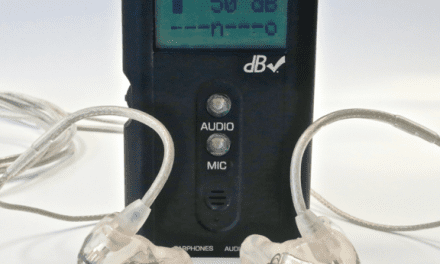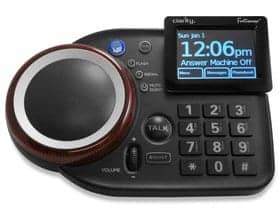Summary: At the AAA 2024+HearTECH Expo, research led by Barbara Weinstein, PhD, highlighted the positive impact of the InnoCaption captioning app on the quality of life for individuals with hearing loss.
Takeaways:
- The research indicated a notable increase in smartphone usage among respondents following the adoption of InnoCaption, suggesting individuals with hearing loss utilized their smartphones more frequently for communication.
- New findings also underscore the efficacy of captioning technology in alleviating the cognitive strain associated with auditory communication for individuals with hearing impairment.
- Users in the study overwhelmingly reported feelings of confidence, happiness, and contentment during captioned calls.
New research observed improvements in quality of life measures—including an increase in happiness and confidence, and a reduction in frustration and anxiety associated with smartphone and tablet calls—when using the InnoCaption captioning app, according to a presentation held at the AAA 2024+HearTECH Expo.
AAA 2024 Presentation
Data were presented at the American Academy of Audiology annual meeting in Atlanta, by lead author Barbara Weinstein, PhD, professor and founding executive officer of the Health Sciences Doctoral Programs at the Graduate Center, CUNY, and adjunct professor of Medicine at NYU Langone Medical Center in NYC.
Improved Communication Over the Phone
The presentation, “From Frustrated and Discouraged to Confident and Content: Smartphone Captioned Call Experiences with the InnoCaption App,” explored levels of effort and emotions associated with making calls over a smartphone or tablet among people with varying degrees of hearing loss.
Key findings of the InnoCaption Study:
- Only 59% of respondents reported using their smartphone “frequently” before using InnoCaption. This number jumped to 70% three months later after using InnoCaption.
- Before using InnoCaption, 62% of respondents said they experienced considerable listening fatigue when making calls with their smartphone. This number dropped to only 14% after they started using InnoCaption.
- Prior to using InnoCaption, 66% of respondents said that they had to put in considerable effort when making calls on their smartphones. Following the use of InnoCaption, only 19% of respondents reported that making calls on their smartphones required a high level of listening effort.
- The majority of respondents expressed frustration, anxiety, and feeling discouraged when using their smartphones without InnoCaption.
- After three months, very few respondents (between 10% and 14%) said they were frustrated, stressed, or discouraged after they started using InnoCaption. Instead, they overwhelmingly reported feeling confident, happy, and content when using InnoCaption.
“A major reason people with hearing loss seek assistance from hearing healthcare providers is because of difficulty communicating in specific situations – notably with family and friends, when in large gatherings, and when in restaurants – even when wearing hearing aids or a cochlear implant. These challenges in face-to-face communication often lead people to socially withdraw,” says Weinstein. “Hence, communicating over the phone can often be one of the means by which people engage. The results of this survey suggest that the InnoCaption app is a form of assistive technology that has enabled people to remain socially engaged because of the increased accessibility experienced by people with hearing difficulty.”
Further reading: Helping Patients Parse Hearing Technology Beyond Hearing Aids
The InnoCaption App
InnoCaption is a mobile app that offers real-time captioning of phone calls. The app is available on iOS and Android phones and tablet devices and the service is offered at no cost to anyone in the United States who has a hearing loss and needs captions to understand their phone calls. InnoCaption’s hybrid captioning technology allows users to freely switch between captions generated by live stenographers or automated speech recognition technology, the company says.
Survey Methodology
The baseline survey was launched in September 2022, and was sent to 3,606 new users, with two reminders after receiving the initial invitation to participate. Of the 3,606 surveys sent, 341 were received within the three-month response deadline window (approximately a 10% response rate).





